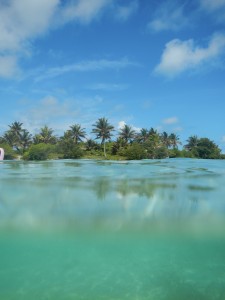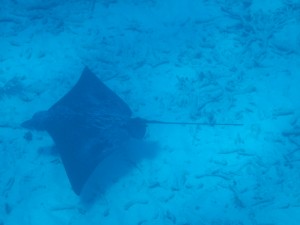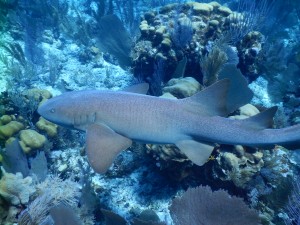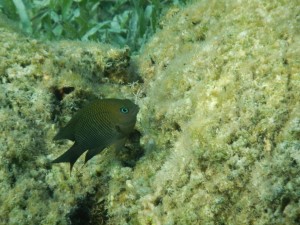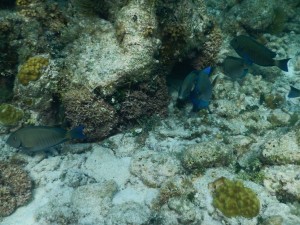
Our time in Belize has nearly run its course, and while I’m excited at the prospect of a hot shower, I can’t believe how quickly two weeks have passed. For our final day at Glover’s Reef,
we set out to find as much diversity as possible in the back reef close to the shore of Middle Caye. In my final snorkel here, I found a
huge number of herbivorous fish. Ocean surgeonfish (Acanthurus bahianus) and doctorfish (Acanthurus chirurgus) swam right past me in pairs and groups, and I found an abundance of cocoa damselfish (Stegastes variabilis) in between the corals. I also saw several French angelfish (Pomacanthus paru), a large black and yellow fish that feeds on algae, as well as some invertebrates.
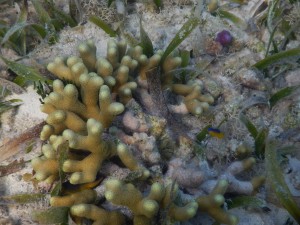
We also collected a number of species from the shallow seagrass beds by the shoreline and sorted them by taxonomic group. Using just nets, we were able to catch two yellowtail damselfish (Chrysiptera parasema) and another fish that I believe was a species of goby. We ended the morning by presenting a colorful array of macroalgae, echinoderms, jellyfish, and mollusks.
The afternoon’s activity was our long-awaited lionfish dissection. We were only able to capture four specimens of the invasive species, but each one was dismembered and analyzed by its stomach contents. Hopefully, the more we can learn about the lionfish, the better we can manage its invasion of the Caribbean.
For the perfect ending to our last day on the reef, we visited Southwest Caye, another island inside of the atoll. From the comfort of the dock, I watched the sun set on my Belizean adventure (at least for the time being).

